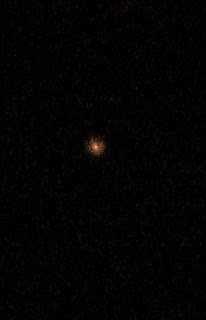Ad Support : Nano Technology Netbook Technology News Computer Software
 University of Otago scientists are the first in the world to consistently isolate and capture a single neutral atom – and the first to take a photograph of Rubidium 85.
University of Otago scientists are the first in the world to consistently isolate and capture a single neutral atom – and the first to take a photograph of Rubidium 85.
The next step is to try and generate a “state of entanglement” between the atoms, a kind of atomic romance which lasts the distance, he says. “We need to generate communication between the atoms where they can feel each other, so when they are apart they stay entangled and don’t forget each other even from a distance. This is the property that a quantum computer uses to do tasks simultaneously,” says Dr Andersen.
Nature Physics – Near-deterministic preparation of a single atom in an optical microtrap
Their method provides a way to deliver atoms needed to build certain quantum computers. It is now possible to get a set of 10 atoms held or trapped at the one time. their technology could capture and isolate atoms 83% of the time.
They used a $575,000 network of lasers in a scheme they developed themselves, to cool and dramatically slow a group of rubidium 85 atoms. A laser beam, which Dr Andersen called “optical tweezers” and likened to a science-fiction tractor beam, was then used to isolate and hold an atom.
The atom was held near a microscope and, using a camera designed for space, photographed – the first time for a rubidium 85 atom.
Neutral atoms stored in optical traps are strong candidates for a physical realization of a quantum logic device. Far off-resonance optical traps provide conservative potentials and excellent isolation from the environment, and they may be arranged to produce arbitrary arrays of traps, where each trap is occupied by a single atom that can be individually addressed. At present, significant effort is being expended on developing two-qubit gates based on coupling individual Rydberg atoms in adjacent optical microtraps. A major challenge associated with this approach is the reliable generation of single-atom occupancy in each trap, as the loading efficiency in the past experiments has been limited to 50%. Here we report a loading efficiency of 82.7% in an optical microtrap. We achieve this by manipulating the collisions between pairs of trapped atoms through tailored optical fields and directly observing the resulting single atoms in the trap.
4 pages of supplemental material
Femtotech

Brian Wang is a Futurist Thought Leader and a popular Science blogger with 1 million readers per month. His blog Nextbigfuture.com is ranked #1 Science News Blog. It covers many disruptive technology and trends including Space, Robotics, Artificial Intelligence, Medicine, Anti-aging Biotechnology, and Nanotechnology.
Known for identifying cutting edge technologies, he is currently a Co-Founder of a startup and fundraiser for high potential early-stage companies. He is the Head of Research for Allocations for deep technology investments and an Angel Investor at Space Angels.
A frequent speaker at corporations, he has been a TEDx speaker, a Singularity University speaker and guest at numerous interviews for radio and podcasts. He is open to public speaking and advising engagements.

